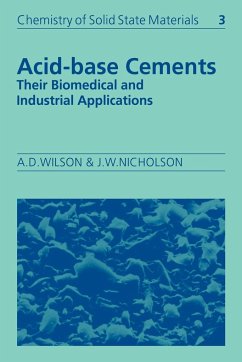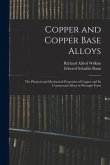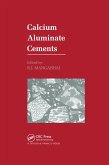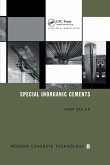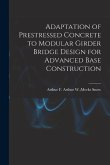This book is the first comprehensive account of acid-base reaction cements.
Acid-base cements have been known since the mid-nineteenth century and offer an alternative to polymerization as a route for forming solid substances. They are quick setting materials and some have unusual properties for cements, such as adhesion and translucency. They find diverse applications ranging from the biomedical to the industrial. Despite this there has been a failure to recognize them as constituting a single, well defined class of material. This book attempts to remedy this situation by unifying the subject and treating this range of materials as a single class. Following a brief historical overview, an introductory chapter defines these cements as materials that are formed by reacting a basic powder with an acidic liquid to yield a salt-like matrix. The nature of the cementation process and the cement-forming acids and bases are discussed. Other chapters are devoted to the methods of study, the structure of water and simple polyelectrolyte theory. In the remaining chapters the various types of cements classified according the anionic constituent of the matrix, are described. Thus, there are chapters on polyalkenoate, phosphate, oxychloride, oxysulphate and the non-aqueous phenolate cements. A chapter is devoted to miscellaneous aqueous cements which include the recently discovered polyphosphonate cements.
Table of content:
1. The formation of cements; 2. Acid-base concepts; 3. Experimental techniques for the study of acid-base elements; 4. Water and acid-base cements; 5. Polyelectrolytes, ion binding and gelation; 6. Polyalkenoates cements; 7. Phosphate bonded cements; 8. Oxysalt bonded cements; 9. Miscellaneous aqueous cements; 10. Non-aqueous cements.
Hinweis: Dieser Artikel kann nur an eine deutsche Lieferadresse ausgeliefert werden.
Acid-base cements have been known since the mid-nineteenth century and offer an alternative to polymerization as a route for forming solid substances. They are quick setting materials and some have unusual properties for cements, such as adhesion and translucency. They find diverse applications ranging from the biomedical to the industrial. Despite this there has been a failure to recognize them as constituting a single, well defined class of material. This book attempts to remedy this situation by unifying the subject and treating this range of materials as a single class. Following a brief historical overview, an introductory chapter defines these cements as materials that are formed by reacting a basic powder with an acidic liquid to yield a salt-like matrix. The nature of the cementation process and the cement-forming acids and bases are discussed. Other chapters are devoted to the methods of study, the structure of water and simple polyelectrolyte theory. In the remaining chapters the various types of cements classified according the anionic constituent of the matrix, are described. Thus, there are chapters on polyalkenoate, phosphate, oxychloride, oxysulphate and the non-aqueous phenolate cements. A chapter is devoted to miscellaneous aqueous cements which include the recently discovered polyphosphonate cements.
Table of content:
1. The formation of cements; 2. Acid-base concepts; 3. Experimental techniques for the study of acid-base elements; 4. Water and acid-base cements; 5. Polyelectrolytes, ion binding and gelation; 6. Polyalkenoates cements; 7. Phosphate bonded cements; 8. Oxysalt bonded cements; 9. Miscellaneous aqueous cements; 10. Non-aqueous cements.
Hinweis: Dieser Artikel kann nur an eine deutsche Lieferadresse ausgeliefert werden.
